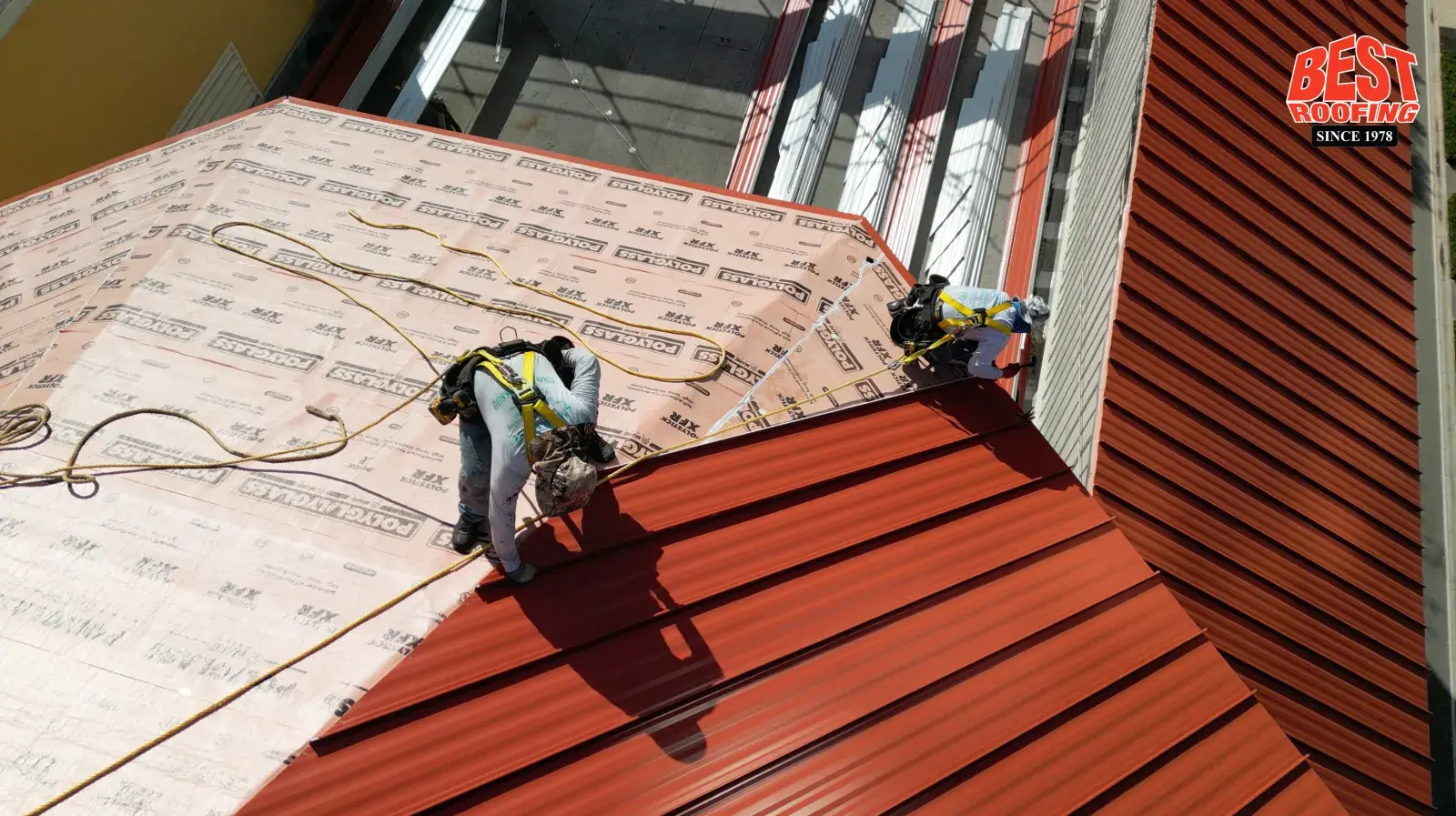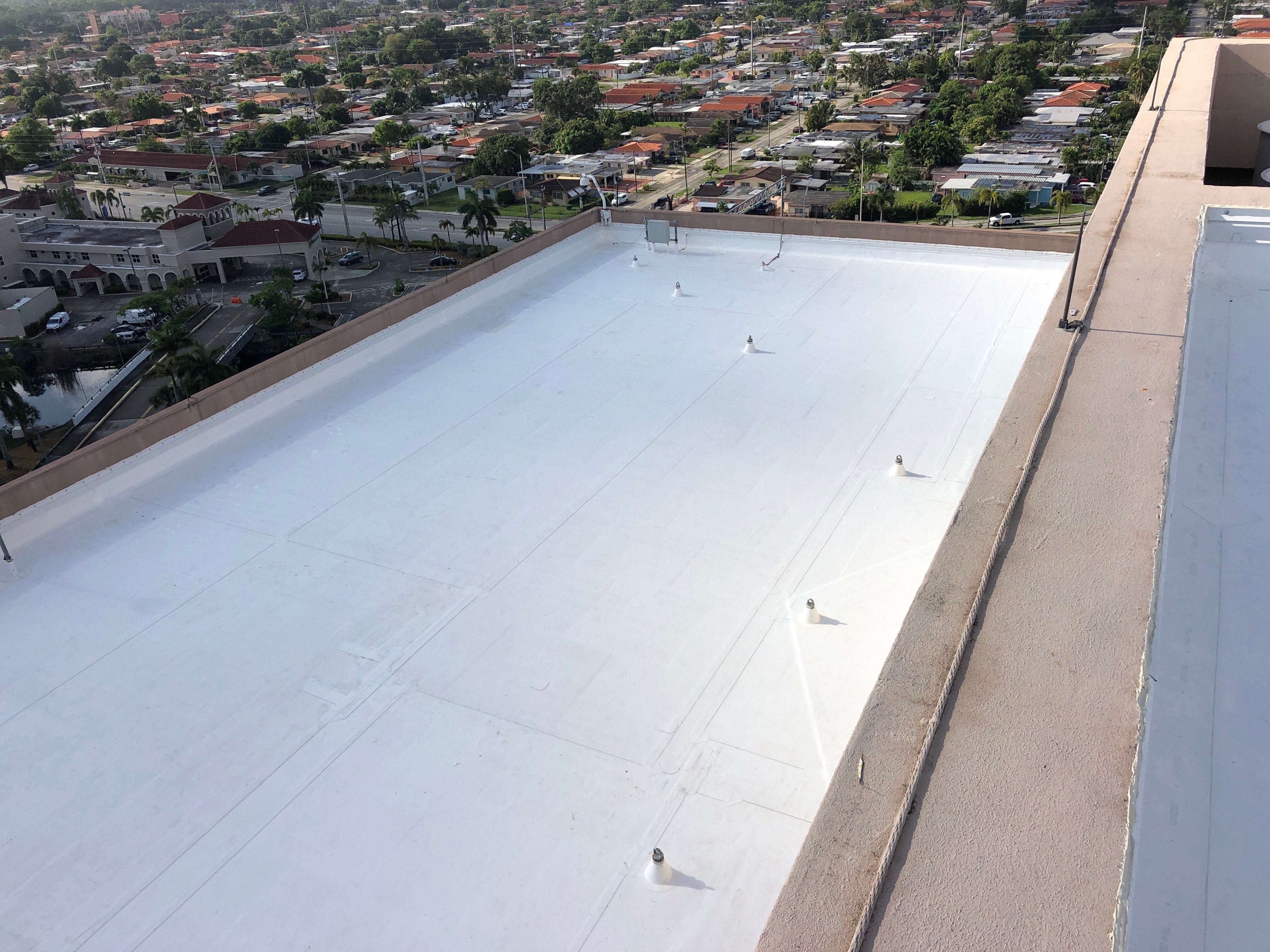If you live in a hurricane-prone region, your roof is your home's first—and most important—line of defense. High winds, wind-driven rain, flying debris, and even tornadoes can cause significant damage during storm season. Fortunately, modern materials and hurricane resistant roof designs make it possible to safeguard your property.
In this guide, we'll break down what makes a hurricane proof roof, explore the best materials, and share actionable tips on how to make a roof hurricane proof—so you can weather any storm with confidence.
What Does a Hurricane-Proof Roof Protect Against?
Before selecting a roofing system, it's crucial to understand the risks you're facing against during hurricane season:
Wind-Driven Rain: Unlike floodwater, this rain is propelled into your home by wind, often bypassing traditional barriers like flashing or vents. It's not always covered by insurance, so prevention is key.
Flying Debris: Tree limbs, signage, or even patio furniture can become destructive projectiles.
High Winds and Uplift: Gusts can create upward pressure at roof edges and corners, lifting roofing materials or tearing off entire sections.
Tornadoes: These can form during hurricanes and deliver devastating localized impact—even to roofs built to code.
Best Roofing Materials for Hurricane Resistance

1. Metal Roofing: The Top Choice for Wind Resistance
Wind rating: Up to 140+ mph
Lifespan: 40-70 years
Metal is the gold standard when it comes to a hurricane resistant roof. Standing seam metal roofs, when installed properly, offer excellent wind uplift performance and resist corrosion. They also shed water quickly and can withstand projectile impacts better than more brittle materials.
Pro Tip: Proper installation is everything. Always work with a certified roofing contractor who understands how to fasten panels and reinforce ridge caps.
Best for: Commercial buildings, modern residential homes, coastal properties
2. Concrete, Ceramic or Clay Tile Roofing: Style with Strength

Wind rating: 100-130 mph
Lifespan: 50+ years
These clay tiles are aesthetically pleasing and offer respectable hurricane resistance—especially when installed with mechanical fasteners and reinforced underlayment. Clay tiles can become dangerous if dislodged.
Installation Tip: Use screws or clips at vulnerable points like gable ends or roof peaks. Combine with a waterproof membrane for best results.
Best for: Mediterranean or Spanish-style homes, aesthetic-driven designs
3. Asphalt Shingles: Budget-Friendly and FEMA-Recommended
Wind rating: 100+ mph (with proper installation)
Lifespan: 15-30 years
Not all asphalt shingles are created equal. Choose architectural shingles rated for high-wind zones and ensure they're nailed—not stapled—into place. Reinforced starter strips and edge sealing can further improve resistance.
Best for: Standard residential properties, homeowners looking for cost-effective solutions
Hurricane Resistant Roof Design: Why Shape and Structure Matter
Choose a Hip Roof Over a Gable Roof
A hip roof, which slopes on all four sides, is naturally more aerodynamic and better equipped to handle gusty winds from multiple directions. In contrast, gable roofs create flat surfaces that are vulnerable to uplift.
Bonus: A hexagonal or octagonal roof shape can disperse wind loads even more effectively.
Mind the Slope: 30 Degrees Is Ideal
The steeper the slope (up to a point), the better your roof can resist wind uplift. A 30-degree pitch balances aesthetics with functionality.

Reinforce with Anchors and Fasteners
Even existing roofs can benefit from structural enhancements. Stainless steel or carbon steel straps, clips, and fasteners can be used to anchor the roof deck to the home's walls and foundation.
Upgrade Tip: Ask your contractor about hurricane straps or roof-to-wall connectors that exceed Florida Building Code minimums.
How to Make a Roof Hurricane Proof: 8 Proven Strategies
Start with a roof inspection to identify weak points, damaged materials, or loose flashing.
Choose the right material for your budget, home style, and region (metal is best overall).
Optimize roof shape and slope during new builds or major renovations.
Reinforce the decking with high-quality synthetic underlayment and water barriers.
Seal all openings including ridge vents, skylights, and soffits.
Install hurricane clips and fasteners to connect roof structure to walls.
Trim nearby trees and remove loose objects from yards before storms.
Work with hurricane roofing specialists who understand local codes and best practices.
The Truth About "Hurricane Proof" Roofs
Is any roof truly hurricane proof? Technically, no roof is guaranteed to survive a direct hit from a Category 5 storm without damage. But with the right materials, design, and proactive maintenance, you can dramatically improve your Residentials home's & commerical properties odds of staying intact—and protect the people and valuables inside.
Ready to Hurricane-Proof Your Roof?
Whether you're upgrading an older system or building from scratch, Best Roofing's team of hurricane roofing specialists is here to help.
Free, no-obligation inspection
46 years of experience in South Florida
Expertise in commercial and residential roofing
Licensed, insured, and locally trusted
Call us today at (888) 485-9784 or request an inspection online.


